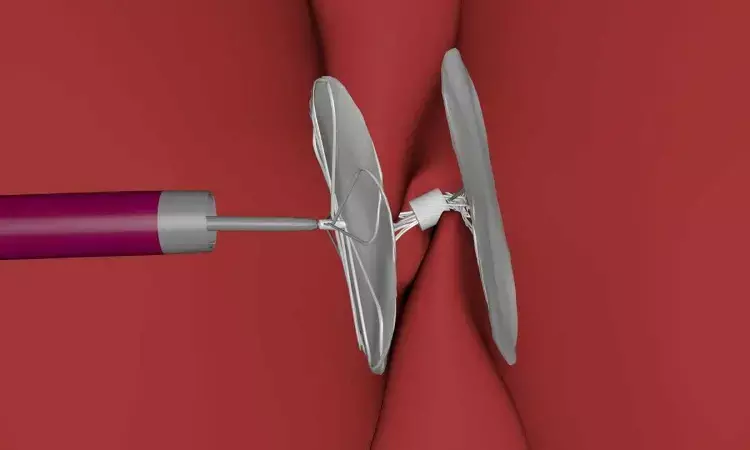- Home
- Medical news & Guidelines
- Anesthesiology
- Cardiology and CTVS
- Critical Care
- Dentistry
- Dermatology
- Diabetes and Endocrinology
- ENT
- Gastroenterology
- Medicine
- Nephrology
- Neurology
- Obstretics-Gynaecology
- Oncology
- Ophthalmology
- Orthopaedics
- Pediatrics-Neonatology
- Psychiatry
- Pulmonology
- Radiology
- Surgery
- Urology
- Laboratory Medicine
- Diet
- Nursing
- Paramedical
- Physiotherapy
- Health news
- Fact Check
- Bone Health Fact Check
- Brain Health Fact Check
- Cancer Related Fact Check
- Child Care Fact Check
- Dental and oral health fact check
- Diabetes and metabolic health fact check
- Diet and Nutrition Fact Check
- Eye and ENT Care Fact Check
- Fitness fact check
- Gut health fact check
- Heart health fact check
- Kidney health fact check
- Medical education fact check
- Men's health fact check
- Respiratory fact check
- Skin and hair care fact check
- Vaccine and Immunization fact check
- Women's health fact check
- AYUSH
- State News
- Andaman and Nicobar Islands
- Andhra Pradesh
- Arunachal Pradesh
- Assam
- Bihar
- Chandigarh
- Chattisgarh
- Dadra and Nagar Haveli
- Daman and Diu
- Delhi
- Goa
- Gujarat
- Haryana
- Himachal Pradesh
- Jammu & Kashmir
- Jharkhand
- Karnataka
- Kerala
- Ladakh
- Lakshadweep
- Madhya Pradesh
- Maharashtra
- Manipur
- Meghalaya
- Mizoram
- Nagaland
- Odisha
- Puducherry
- Punjab
- Rajasthan
- Sikkim
- Tamil Nadu
- Telangana
- Tripura
- Uttar Pradesh
- Uttrakhand
- West Bengal
- Medical Education
- Industry
Novel Scoring System to Identify Which Patients Benefit From PFO Device Closure

Patent foramen ovale (PFO) - associated strokes comprise approximately 10% of ischemic strokes in adults aged 18 to 60 years. In a recent study, researchers developed a novel classification system that helps to differentiate which patients with ischemic stroke of the unknown origin might benefit from patent foramen ovale closure. The study findings were published in the JAMA on December 14, 2021.
While PFO device closure decreases stroke recurrence risk overall, the best treatment for any individual is often unclear. Therefore, Dr David M. Kent and his team conducted a study to evaluate heterogeneity of treatment effect of PFO closure on stroke recurrence based on previously developed scoring systems.
The researchers pooled individual patient data from the Systematic, Collaborative, PFO Closure Evaluation (SCOPE) consortium, which analyzed 3,740 patients data from six randomized trials comparing PFO closure plus medical therapy to medical therapy alone for recurrent stroke prevention.
The researchers compared the effect of PFO closure plus medical therapy and medical therapy alone. In subgroup analyses, they used the Risk of Paradoxical Embolism (RoPE) Score (a 10-point scoring system in which higher scores reflect younger age and the absence of vascular risk factors) and the PFO-Associated Stroke Causal Likelihood (PASCAL) Classification System, which combines the RoPE Score with high-risk PFO features (either an atrial septal aneurysm or a large-sized shunt) to classify patients into 3 categories of causal relatedness: unlikely, possible, and probable. The major outcome assessed was the incidence of ischemic stroke.
Key findings of the study:
- At 57 months, the researchers found that the annualized incidence of stroke was 1.09% in those assigned medical therapy alone and 0.47% in those assigned PFO closure plus medical therapy (adjusted HR = 0.41).
- In subgroup analyses, they observed statistically significant interaction effects.
- They found that patients with low RoPE scores had a higher risk for stroke (HR = 0.61) than those with high RoPE scores (HR = 0.21).
- In patients who were classified as unlikely, possible, and probable using the PASCAL Classification System, they observed that the HRs was 1.14, 0.38, and 0.10, respectively.
- They noted that the 2-year absolute risk reduction for stroke due to PFO closure was 2.1% in both the possible and probable groups, but –0.7% in the unlikely group.
- They also found that the adverse events of device closure, such as atrial fibrillation, appear to be concentrated in those patients who fall into the unlikely classification, who appear to get no benefit.
The authors concluded, "Among patients aged 18 to 60 years with PFO-associated stroke, risk reduction for recurrent stroke with device closure varied across groups classified by their probabilities that the stroke was causally related to the PFO. Application of this classification system has the potential to guide individualized decision-making."
For further information:
Medical Dialogues Bureau consists of a team of passionate medical/scientific writers, led by doctors and healthcare researchers. Our team efforts to bring you updated and timely news about the important happenings of the medical and healthcare sector. Our editorial team can be reached at editorial@medicaldialogues.in.
Dr Kamal Kant Kohli-MBBS, DTCD- a chest specialist with more than 30 years of practice and a flair for writing clinical articles, Dr Kamal Kant Kohli joined Medical Dialogues as a Chief Editor of Medical News. Besides writing articles, as an editor, he proofreads and verifies all the medical content published on Medical Dialogues including those coming from journals, studies,medical conferences,guidelines etc. Email: drkohli@medicaldialogues.in. Contact no. 011-43720751


